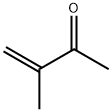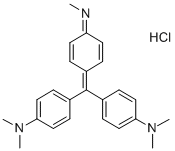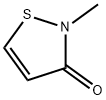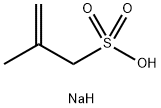3-Methyl-3-buten-2-one
- CAS NO.:814-78-8
- Empirical Formula: C5H8O
- Molecular Weight: 84.12
- MDL number: MFCD00059207
- EINECS: 212-405-1
- SAFETY DATA SHEET (SDS)
- Update Date: 2024-12-18 14:08:52

What is 3-Methyl-3-buten-2-one ?
Chemical properties
Colorless or light yellow transparent liquid
The Uses of 3-Methyl-3-buten-2-one
Plastics.
Definition
ChEBI: 3-Methyl-3-buten-2-one is an olefinic compound. It is functionally related to an acrylic acid.
Production Methods
3-Methyl-3-buten-2-one is produced by acid-catalyzed condensation of 2-butanone with formaldehyde in the liquid phase.
A further possibility is the methylolization of 2-
butanone under alkaline conditions followed by
elimination of water:
General Description
A clear colorless liquid. Flash point of 52°F. Denser than water and insoluble in water. Hence sinks in water. Vapors heavier than air.
Air & Water Reactions
Highly flammable. Insoluble in water.
Reactivity Profile
3-Methyl-3-buten-2-one tends to polymerize; this reaction is mostly suppressed by the inhibitor. Can polymerize if heated or contaminated. If confined in a container when polymerization is initiated, the container may violently rupture [USCG, 1999].
Hazard
Flammable, dangerous fire risk, explosivelimits in air 1.8–9.0%.
Health Hazard
Inhalation causes irritation of nose and throat. Liquid may cause severe damage to eyes, resulting possibly in some permanent impairment of vision; vapor produces tears. If not removed promptly from skin, liquid may cause delayed pain and blistering. Ingestion causes irritation of mouth and stomach.
Fire Hazard
Behavior in Fire: May polymerize and explode.
Chemical Reactivity
Reactivity with Water: No reaction; Reactivity with Common Materials: No reaction; Stability During Transport: Stable; Neutralizing Agents for Acids and Caustics: Not pertinent; Polymerization: Will polymerize in the absence of inhibitor, especially when heated; Inhibitor of Polymerization: Up to 1% hydroquinone.
Safety Profile
Poison by ingestion and skin contact. Moderately toxic by inhalation and intraperitoneal routes. A skin and severe eye irritant. A dangerous fire hazard when exposed to heat or flame. Explosive in the form of vapor when exposed to heat or flame. When heated to decomposition it emits acrid smoke and irritating fumes.
Properties of 3-Methyl-3-buten-2-one
| Melting point: | -54°C |
| Boiling point: | 98°C |
| Density | 0,86 g/cm3 |
| refractive index | 1.4210 to 1.4250 |
| Flash point: | 9°C |
| storage temp. | Freezer |
| Water Solubility | Slightly soluble in water |
| solubility | Chloroform (Sparingly), Ethyl Acetate (Slightly), Methanol (Slightly) |
| form | clear liquid |
| color | Colorless to Light yellow |
| Odor | Very pungent; pleasant; sweet. |
| CAS DataBase Reference | 814-78-8 |
| NIST Chemistry Reference | 3-Buten-2-one, 3-methyl-(814-78-8) |
| EPA Substance Registry System | 3-Buten-2-one, 3-methyl- (814-78-8) |
Safety information for 3-Methyl-3-buten-2-one
| Signal word | Warning |
| Pictogram(s) |
 Exclamation Mark Irritant GHS07 |
| GHS Hazard Statements |
H302:Acute toxicity,oral H315:Skin corrosion/irritation H319:Serious eye damage/eye irritation H335:Specific target organ toxicity, single exposure;Respiratory tract irritation |
| Precautionary Statement Codes |
P261:Avoid breathing dust/fume/gas/mist/vapours/spray. P270:Do not eat, drink or smoke when using this product. P271:Use only outdoors or in a well-ventilated area. P280:Wear protective gloves/protective clothing/eye protection/face protection. P312:Call a POISON CENTER or doctor/physician if you feel unwell. P330:Rinse mouth. P302+P352:IF ON SKIN: wash with plenty of soap and water. P304+P340:IF INHALED: Remove victim to fresh air and Keep at rest in a position comfortable for breathing. P305+P351+P338:IF IN EYES: Rinse cautiously with water for several minutes. Remove contact lenses, if present and easy to do. Continuerinsing. P403+P233:Store in a well-ventilated place. Keep container tightly closed. |
Computed Descriptors for 3-Methyl-3-buten-2-one
New Products
Tert-butyl bis(2-chloroethyl)carbamate 4-Methylphenylacetic acid N-Boc-D-alaninol N-BOC-D/L-ALANINOL N-octanoyl benzotriazole 3-Morpholino-1-(4-nitrophenyl)-5,6-dihydropyridin- 2(1H)-one Furan-2,5-Dicarboxylic Acid DIETHYL AMINOMALONATE HYDROCHLORIDE 1,1’-CARBONYLDIIMIDAZOLE R-2-BENZYLOXY PROPIONIC ACID 1,1’-CARBONYLDI (1,2-4 TRIAZOLE) N-METHYL INDAZOLE-3-CARBOXYLIC ACID (2-Hydroxyphenyl)acetonitrile 4-Bromopyrazole 5-BROMO-2CYANO PYRIDINE 5,6-Dimethoxyindanone 5-broMo-2-chloro-N-cyclopentylpyriMidin-4-aMine 2-(Cyanocyclohexyl)acetic acid 4-methoxy-3,5-dinitropyridine 1-(4-(aminomethyl)benzyl)urea hydrochloride 2-aminopropyl benzoate hydrochloride diethyl 2-(2-((tertbutoxycarbonyl)amino) ethyl)malonate tert-butyl 4- (ureidomethyl)benzylcarbamate Ethyl-2-chloro((4-methoxyphenyl)hydrazono)acetateRelated products of tetrahydrofuran








You may like
-
 3-Methyl-3-buten-2-one (stabilized with HQ) CAS 814-78-8View Details
3-Methyl-3-buten-2-one (stabilized with HQ) CAS 814-78-8View Details
814-78-8 -
 3-Methyl-3-buten-2-one CASView Details
3-Methyl-3-buten-2-one CASView Details -
 1975-50-4 98%View Details
1975-50-4 98%View Details
1975-50-4 -
 2-HYDROXY BENZYL ALCOHOL 98%View Details
2-HYDROXY BENZYL ALCOHOL 98%View Details
90-01-7 -
 2-Chloro-1,3-Bis(Dimethylamino)Trimethinium Hexafluorophosphate 221615-75-4 98%View Details
2-Chloro-1,3-Bis(Dimethylamino)Trimethinium Hexafluorophosphate 221615-75-4 98%View Details
221615-75-4 -
 14714-50-2 (2-Hydroxyphenyl)acetonitrile 98+View Details
14714-50-2 (2-Hydroxyphenyl)acetonitrile 98+View Details
14714-50-2 -
 118753-70-1 98+View Details
118753-70-1 98+View Details
118753-70-1 -
 733039-20-8 5-broMo-2-chloro-N-cyclopentylpyriMidin-4-aMine 98+View Details
733039-20-8 5-broMo-2-chloro-N-cyclopentylpyriMidin-4-aMine 98+View Details
733039-20-8